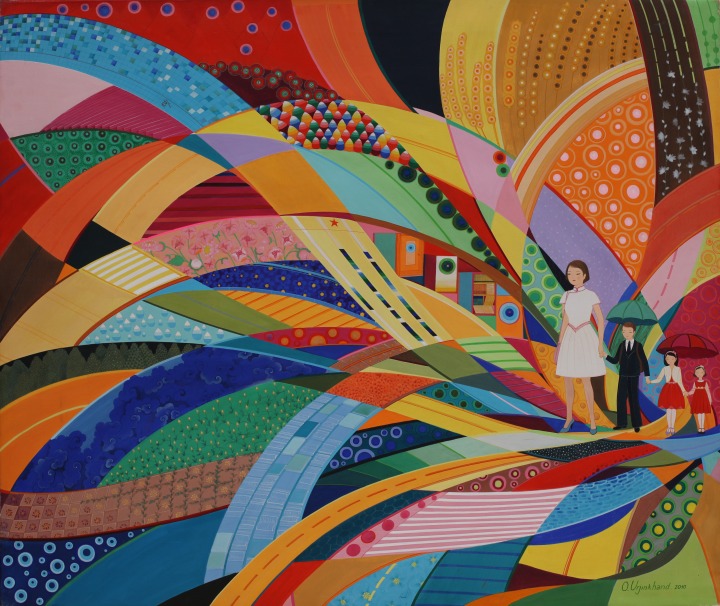Mongolian Painting
Tradition Revitalized by the Youth Culture
The term applies to the painting (zurag) in traditional techniques prior to the acceptance of Western art influences. Backed by the Soviet Union, Mongolia became independent as a socialist country in 1924. As Buddhism was banned by the state thus depriving artists of what had been the primary source of artistic content up until then, and with Western art accepted by the country’s leadership, not long after independence, traditional painting became a forgotten thing of the past. In the 1960s came signs of a revival from artists such as Urjingiin Yadamsuren (1905–1986), painting genre pieces drawing on socialist and traditional Mongolian themes. New developments have occurred since 2000 as graduates from the University of Mongolian Art and Culture have picked up contemporary subject matters. Whereas originally only mineral based pigments were used, today Mongolian painting includes work rendered in acrylics, watercolor and even appliqué.
[Yamaki Yuko]

Onongiin Urjinkhand "Absence of Father" 2010 gouache on cotton

Ganboldyn Gerelkhuu "Lust" 2012 watercolor on canvas
